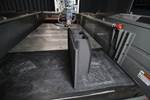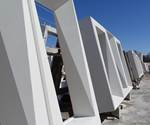Large-Format 3D Printer Builds Carbon Fiber-Reinforced Submarine
Oak Ridge National Laboratory (ORNL) has teamed up with the U.S. Navy to 3D print a demonstrator submarine hull for Navy SEALs application.
The U.S. Department of Energy’s Office of Energy Efficiency and Renewable Energy reported on July 20 that Oak Ridge National Laboratory’s Manufacturing Demonstration Facility (ORNL MDF), in partnership with the Navy’s Disruptive Technology Lab, has created the military’s first 3D-printed submarine hull.
The Optionally Manned Technology Demonstrator is inspired by the submersible SEAL Delivery Vehicle (SDV). SDVs are typically used to transport U.S. Navy SEALs and their equipment to special operations missions. In the future, these vehicles will need to be manufactured faster and incorporate new designs to support each Navy mission.
The team was asked to build a 30-ft. proof-of-concept hull out of carbon fiber composite material. With four weeks to get the job done, the team used ORNL MDF’s Big Area Additive Manufacturing (BAAM), a large-format 3D printer that lays down a thermoplastic resin reinforced with chopped carbon fibers.
The cost of a traditional SDV hull ranges from $600,000 to $800,000 and typically takes 3 to 5 months to manufacture. Using BAAM reduced hull production costs by 90 percent and reduced production time to a matter of days.
In phase two, the Navy will create a second, water-tight version of the hull that will be tested in the wave pool at the NAVSEA Carderock Division in Bethesda, MD, US—a testing facility that mimics the most compromising conditions that ships and submarines might encounter in the ocean. Fleet-capable prototypes could be introduced as early as 2019.
Related Content
-
Alquist 3D Looks Toward a Carbon-Sequestering Future with 3D Printed Infrastructure
The Colorado startup aims to reduce the carbon footprint of new buildings, homes and city infrastructure with robotic 3D printing and a specialized geopolymer material.
-
Video: Construction 3D Printing with Robotics, Geopolymer
Alquist 3D is aiming to revolutionize construction and infrastructure with large-format robotic 3D printing using a carbon-neutral material.
-
Sustainable Furniture Company Model No. Maintains Product Focus with Switch from DIY to Industrial 3D Printers
The startup founded in 2018 has matured in its product offerings as well as its manufacturing equipment, moving from homegrown 3D printers to industrial large-format machines.















